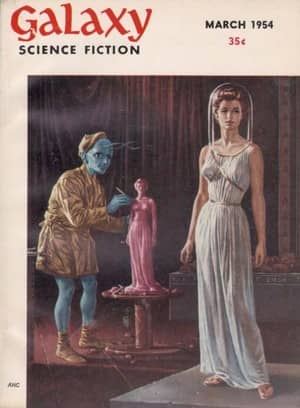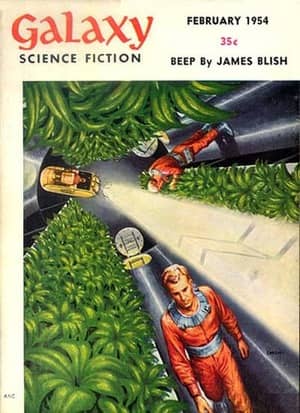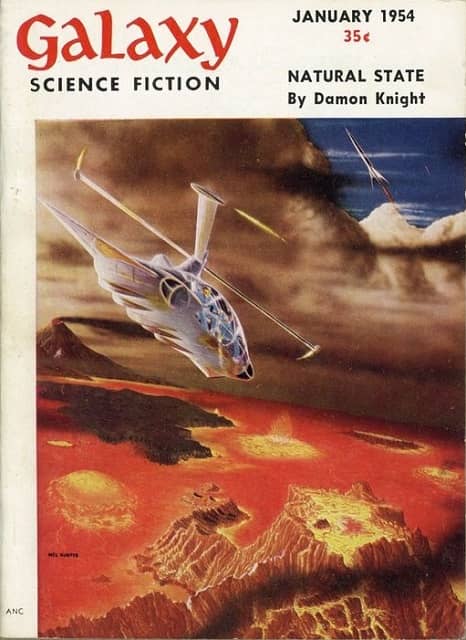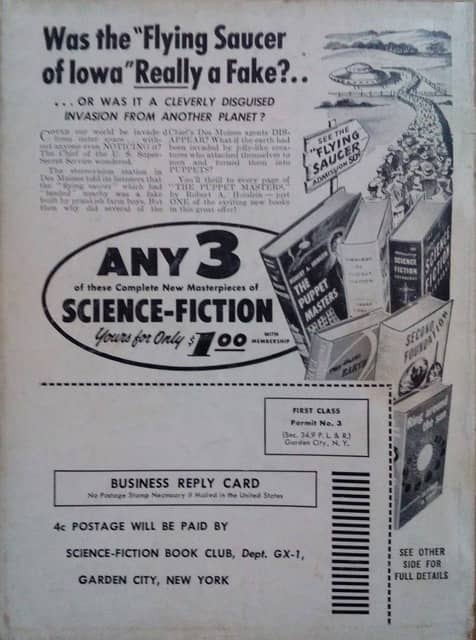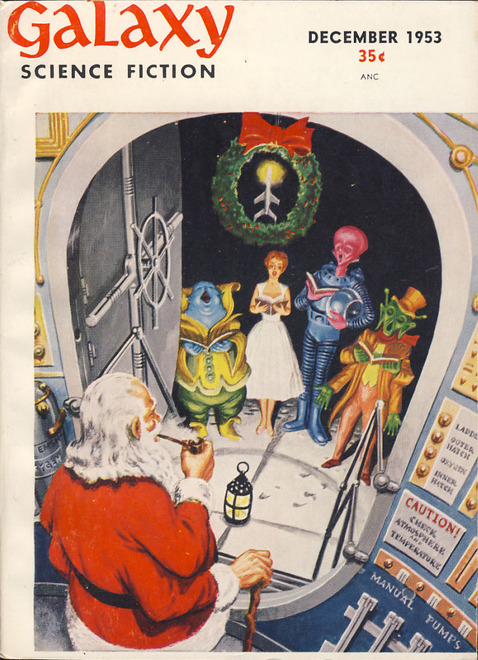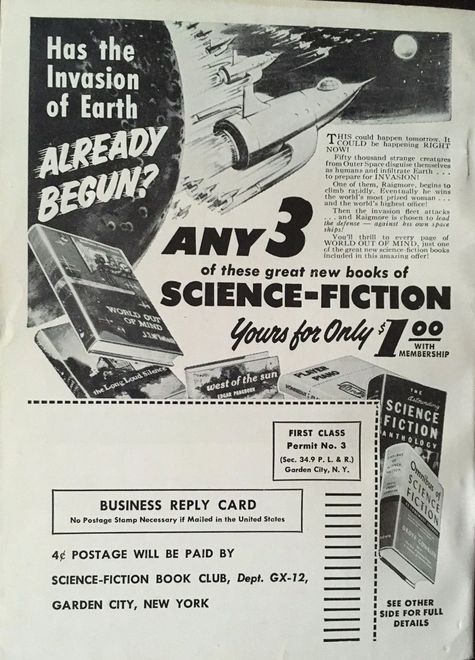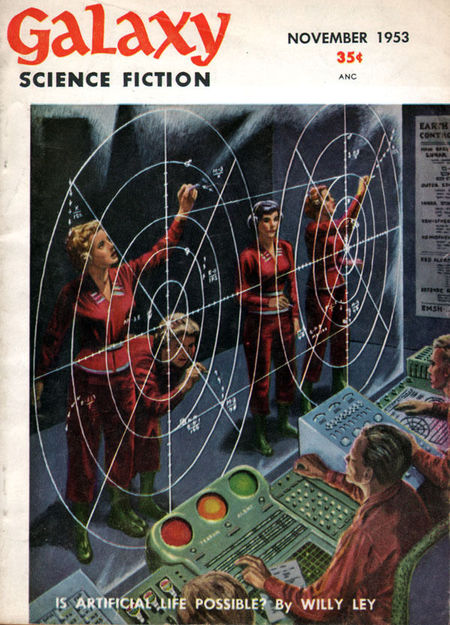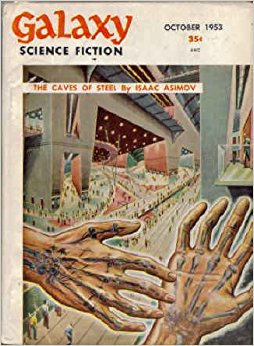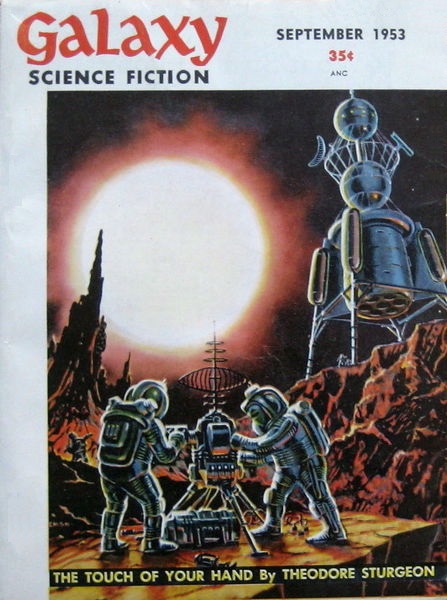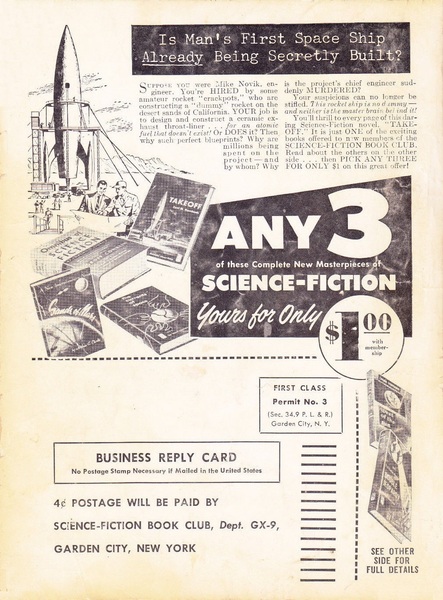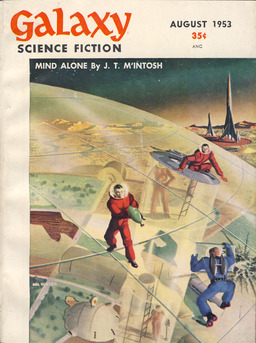Galaxy Science Fiction, April 1954: A Retro-Review
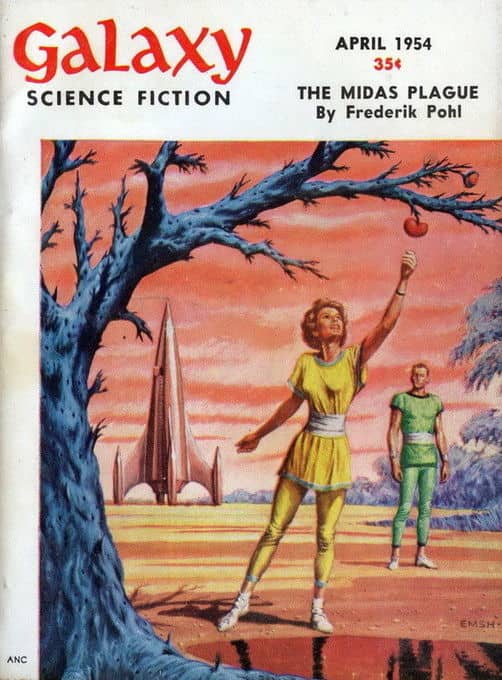 |
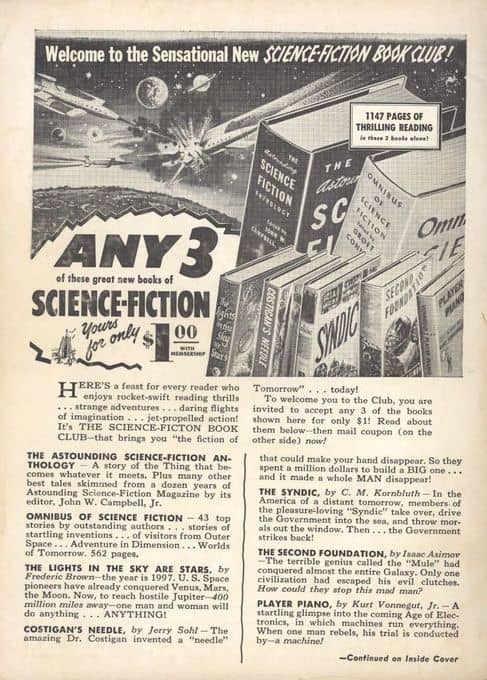 |
The April, 1954 issue is one of the more remarkable issues of Galaxy Science Fiction, in my opinion. I’m amazed at the quality of the stories. There have been many good issues, of course, but this is one of those rare issues that jumps out at me. It’s like watching a beloved TV series where a few episodes really stand out. It’s the nature of art, I suppose. Every piece is its own and affects people differently; some may enjoy it, some may reject it, some may be confused, some may be enlightened. And the same artist might create multiple pieces that evoke different reactions from the same person. Rather than ramble on about my thoughts on art, I’ll return to the topic of this article and review the fiction.
“The Midas Plague” by Frederik Pohl — In Morey’s world, consuming is mandatory. Houses, clothes, and food must be purchased and used to meet quota. There must not be waste. Those at the high-end of society have low quotas and can live the high-life of one-room houses, perhaps without any cars. But those at the low-end of society struggle in consuming enormous mansions, luxury cars, and so much of material products and food that there aren’t enough hours to consume it all. Morey only works one day per week because the demands of consuming take the rest of his time. Robots have helped to create a world where there is an abundance of everything, forcing the quotas in order to avoid waste and support the massive production.
Morey’s wife Cherry comes from a well-off family who has very little to consume. She loves Morey, but it’s a difficult adjustment to his lower-class life of consuming so much. Morey tries to help her by consuming more, but they’re not making their quotas.
